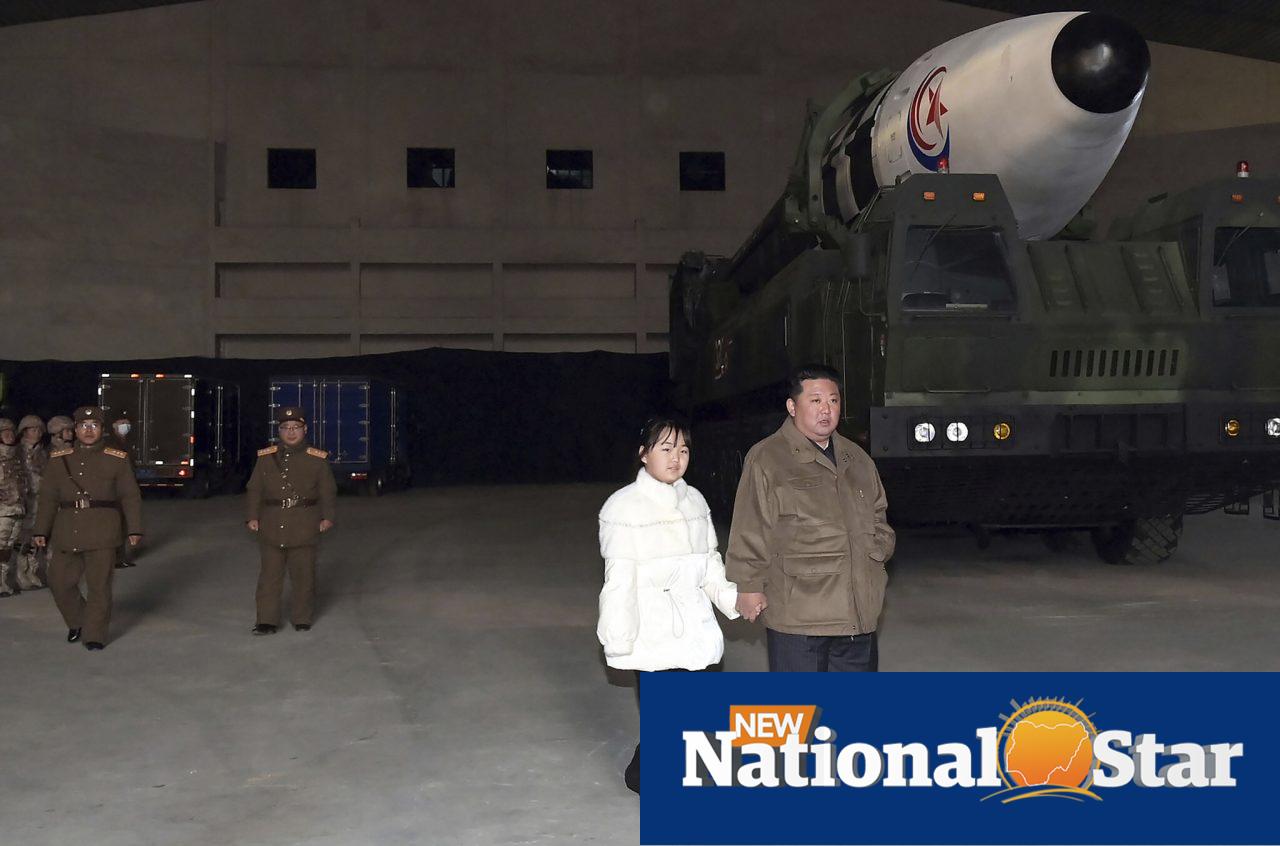North Korean leader Kim Jong Un oversaw a test of Pyongyang’s newest intercontinental ballistic missile with his daughter in tow for the first time, state media reported Saturday.
Declaring he would meet perceived US nuclear threats with nukes of his own, Kim supervised the launch on Friday of the black-and-white missile, which the official Korean Central News Agency (KCNA) said was the Hwasong-17 — dubbed the “monster missile” by analysts.
The launch of the “new major strategic weapon system” was successful, KCNA said.
KCNA said Kim attended the launch “together with his beloved daughter and wife”, and state media images showed a beaming Kim accompanied by a young girl in a puffer jacket and red shoes as he walked in front of the missile.
North Korean state media has never mentioned Kim’s children, and this was the first official confirmation that he had a daughter, experts said.
KCNA’s report on Saturday did not name the daughter, however.
-The fourth generation
The most significant takeaway from Friday’s ICBM launch is “the permanence of the Kim regime’s weapons programme, because it is so integral to Kim’s own survival and the continuity of his family’s reign,” Soo Kim, a former CIA analyst now with the RAND Corporation, told AFP.
With the state media coverage, “we have seen with our own eyes the fourth generation of the Kim family”, she said.
Kim — the grandson of North Korea’s founding leader Kim Il Sung and the third generation of the Kim family to lead the country — married his wife Ri Sol Ju, in 2009, according to South Korea’s spy agency.
She gave birth to their first child the following year, with their second and third born in 2013 and 2017, the agency has said.
The only previous confirmation of the children’s existence had come from former NBA star Dennis Rodman, who claimed he met a baby daughter of Kim’s called Ju Ae during a 2013 visit to North Korea.
The daughter revealed in the photographs is presumed to be Ju Ae, who is likely Kim’s second child, Cheong Seong-chang of the Center for North Korea Studies at the Sejong Institute in South Korea told AFP.
Kim’s warning
KCNA said Saturday that Kim slammed “hysteric aggression war drills”, and said that if the United States continued to make threats, Pyongyang would “resolutely react to nukes with nuclear weapons and to total confrontation with all-out confrontation”.
North Korea has conducted a record-breaking blitz of launches in recent weeks.
Pyongyang — and Moscow — have repeatedly blamed them on Washington’s moves to boost the protection it offers to allies Seoul and Tokyo.
Fears have grown that the launches are building up to a nuclear test.
KCNA said the latest missile hit a maximum altitude of 6,040.9 kilometres (3,750 miles) and flew 999.2 kilometres, matching estimates by Seoul and Tokyo on Friday.
North Korea previously claimed to have launched a Hwasong-17 — its most powerful missile to date — on March 24, releasing a slick promotional video and photos of the event.
But Seoul later cast doubt on that claim.
This time, analysts said it seemed North Korea had succeeded.
“This launch is significant because it is thought to be the first successful full flight test of the Hwasong-17 ICBM,” Joseph Dempsey, a researcher at the International Institute for Strategic Studies (IISS), told AFP.
As with all North Korean ICBM tests, the missile was fired on a lofted trajectory — up not out, to avoid flying over Japan.
That means questions remain about its performance, “particularly in terms of surviving reentry into the atmosphere and… accuracy over greater ranges”, Dempsey said.
The “monster missile” also has disadvantages, he added.
“Its sheer size makes it less practical as a road-mobile system, and production would be likely a significantly greater strain on limited resources.”
Since Kim declared North Korea an “irreversible” nuclear state in September, the United States has ramped up regional security cooperation.
The South Korean military said it staged joint air drills with the United States on Saturday involving the US B-1B long-range heavy bomber.
This was the second B-1B deployment to the Korean peninsula this month — it also participated in “Vigilant Storm”, the largest-ever US-South Korea air exercise.
